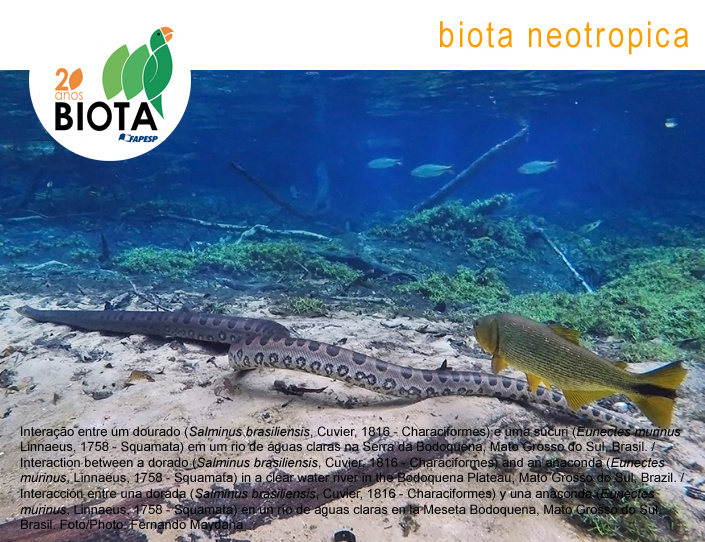Ichthyofauna of the Nascentes do Rio Parnaíba National Park: watershed divide in the main agricultural encroachment area in the Brazilian Cerrado
Abstract
Abstract The Nascentes do Rio Parnaíba National Park (NPNP), located in Brazilian Cerrado, protects portions of three river basins: headwaters of Parnaíba, a small portion in upper Tocantins-Araguaia, and tributaries of the middle section of the São Francisco. This protected area is in the boundaries of the states of Maranhão, Tocantins, Piauí, and Bahia, also known as MATOPIBA, a region that has established rapid agricultural expansion associated to land conflicts between corporate agriculture, family agriculture, protected areas, indigenous territories, and quilombola communities. The knowledge of the ichthyofauna in this region is scarce while the impacts on the aquatic environments are increasing. We made a survey of fishes in the NPNP and its surroundings areas, estimating richness, endemics, introduced and shared species between river basins. During 2014, 54 sampling sites were visited, 19 in the NPNP and 35 in the surrounding area. Ninety-five species, 51 genera, 22 families, and six orders were recorded, of which 38 (40%) are in the NPNP. One introduced species were recorded in the Parnaíba River basin and no endangered species were registered. Our data corroborate the importance of the network of protected areas for the preservation of Cerrado fishes, including some possibly undescribed and restricted-range species that may be threatened due to intense agricultural encroachment in the MATOPIBA region.Published
2023-01-01
How to Cite
Silva, S. C. da, Medeiros, L. S. de, Bezerra Neto, M. F., Silva, M. J. da, Ramos, T. P. A., Lima, F. C. T. de, & Lima, S. M. Q. (2023). Ichthyofauna of the Nascentes do Rio Parnaíba National Park: watershed divide in the main agricultural encroachment area in the Brazilian Cerrado. Biota Neotropica, 23(1). Retrieved from https://www.biotaneotropica.org.br/BN/article/view/1989
Issue
Section
Articles
